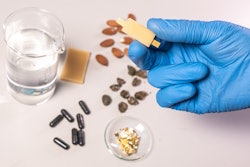
In manufacturing, a total of 846,7001 injuries occurred in 2019 alone. These injuries represent a total of 15 percent2 of all non-fatal injuries and illnesses in the private sector. A number of on-the-job hazards are responsible for putting manufacturing workers at risk. The most common types of accidents in manufacturing include contact with objects and equipment (34 percent), overexertion and other bodily reactions (32 percent), and slips, trips or falls (18 percent).
The biggest danger associated with slips, trips and falls is that falls lead to nearly half of all traumatic brain injury (TBI) hospitalizations.3 One reason such accidents are so critical is that when someone’s head makes impact with the ground, research has shown that it typically occurs at an angle, exposing the head to rotational motion.
Understanding Rotational Motion
The result of angled impacts to the head, rotational motion is the combination of rotational energy (angular velocity) and rotational forces (angular acceleration). Once rotational motion is transferred to the brain, brain cells can begin to move relative to each other, leading to shearing. This may cause damage to the brain’s axons, the cable transmitters of neurons.
As you’re often exposed to both rotational motion and linear motion (linear motion is caused primarily by straight impacts) in most impacts, there’s a high risk of injury. It’s important to note that these two types of motions result in different types of injuries. Linear motion typically causes focal injuries, such as fractures and contusions, while rotational motion can potentially lead to diffuse injuries such as diffuse axonal injury and subdural hematoma.4,5
In both experiments and numerical computer simulations, it has been proven that the brain is more sensitive to rotational motion than linear motion, as it pertains to concussions6. Meaning essentially that concussions caused by rotational motion can occur at lower energy levels than those caused by linear motion. Even impacts that are considered light may lead to concussions once rotational motion is involved.
To help protect workers from traumatic brain injuries, the first step is to ensure those at risk wear a helmet that fits and is comfortable. Workers are much more likely to wear a helmet that fits appropriately. Secondly, workers should also consider helmets designed to help address rotational motion. Some systems, like the Mips® safety system, allow a layer in the helmet to move relative to the wearer’s head. This system is designed to help redirect harmful rotational motion that could otherwise be transferred to the head in certain angled impacts.
Today’s PPE
Historically, helmets have been developed to protect wearers from linear forces, which they typically do a good job at. The five performance tests that must be met to assign safety helmets their classification under the standard ANSI/ISEA Z89.1 include impact energy attenuation, force transmission, flammability, apex penetration, and electrical insulation.
While force transmission tests verify if helmets are able to reduce the force of a linear impact from a falling object to the crown of the head, the impact energy attenuation test tests a larger protective area of the helmet with impacts to front, rear and sides of the helmet. Yet none of these tests analyze the impact of rotational motion on the wearer’s head. Standards in the sports and moto industries are beginning to account for the effect of rotational motion and angled impacts, underscoring the growing awareness of the issue.
For those in the manufacturing industry, the risks associated with slips, trips, and falls won’t be going away anytime soon. It’s critical that workers and jobsite managers understand the risks associated with rotational motion and the long-term impact that a traumatic brain injury can have. Secondly, greater understanding of the types of PPE and helmets that are available, and how they work to mitigate rotational motion, is necessary to spur widespread adoption. Workers will continue to face risks and hazards on the job, and education efforts are critical. We must continue to innovate, help challenge the status quo, and improve helmet safety.
[1] https://stats.bls.gov/news.release/osh.nr0.htm
[2] https://www.bls.gov/news.release/archives/osh_11042020.htm
[3] https://www.cdc.gov/traumaticbraininjury/get_the_facts.html
[4] Gennarelli et.al. (1987). “Directional dependence of axonal brain injury due to centroidal and non-centroidal acceleration,” in Proceedings of the 31st Stapp Car Crash Conference (Warrendale, PA: Society of Automotive Engineers).
[5] Gennarelli et. al. (1972). “Pathophysiological responses to rotational and translational accelerations of the head,” in Proceedings of the 16th Stapp Car Crash Conference, 1972 (Warrendale, PA: Society of Automotive Engineers).
[6] Kleiven, S (2007). “Predictors for traumatic brain injuries evaluated through accident reconstructions,” Stapp Car Crash J, vol. 51, pp. 81–114, Oct. 2007.






















